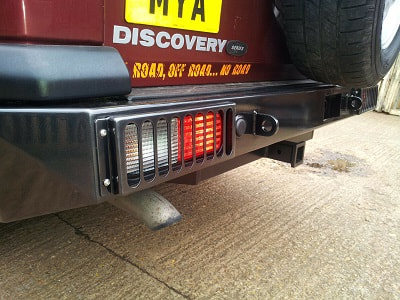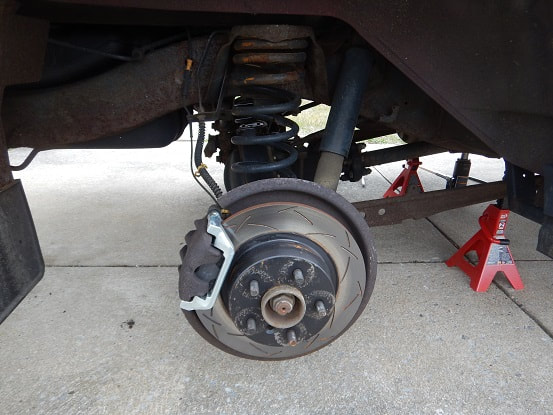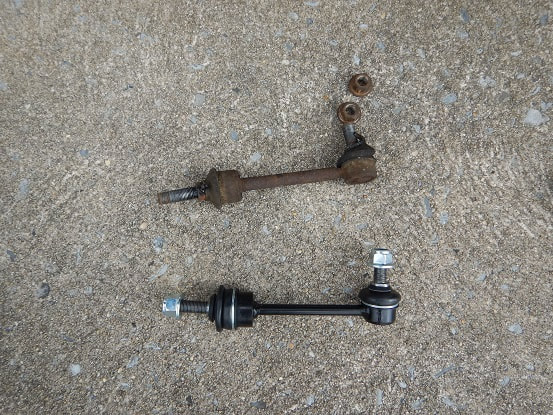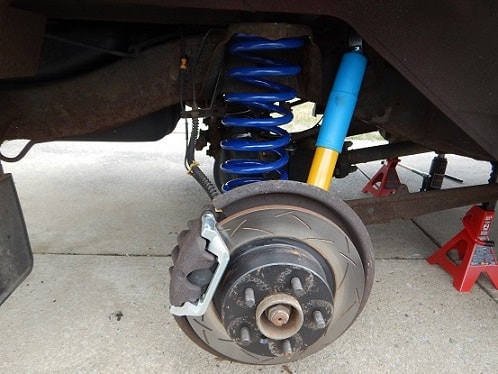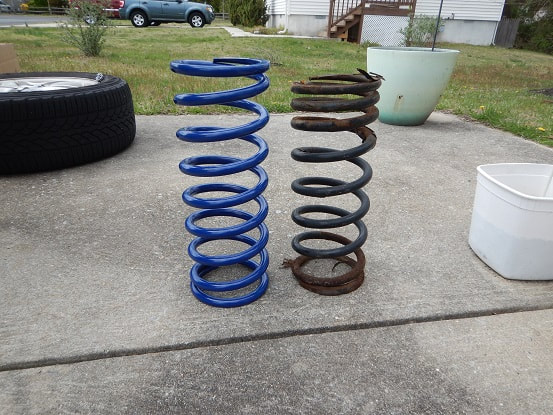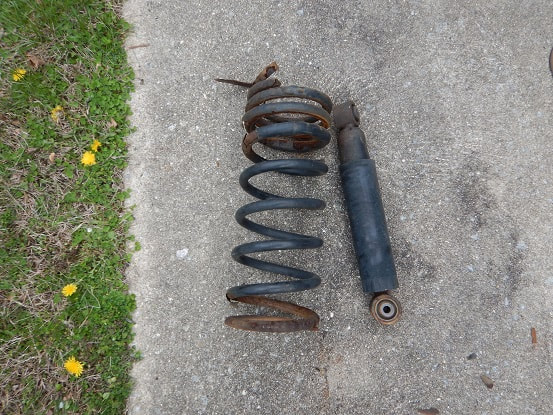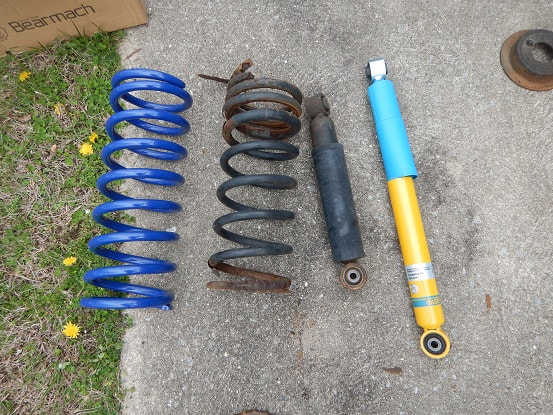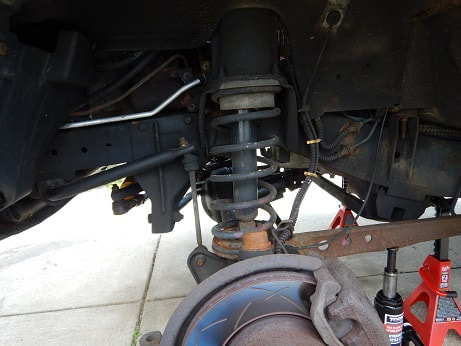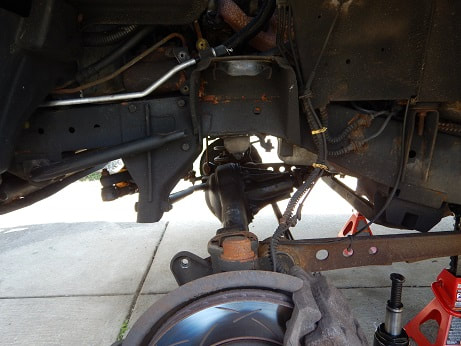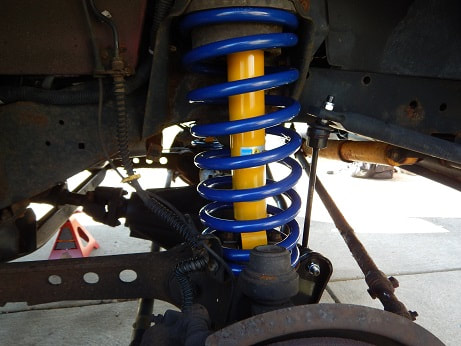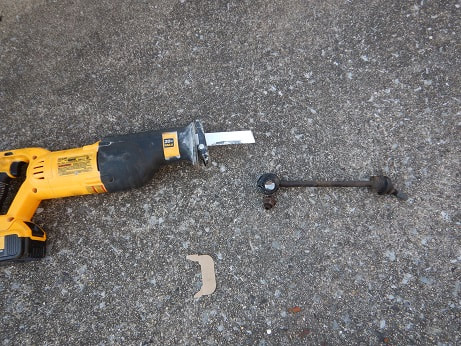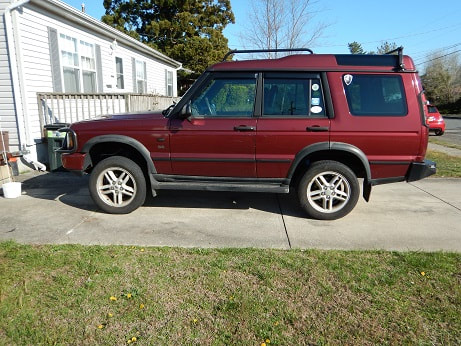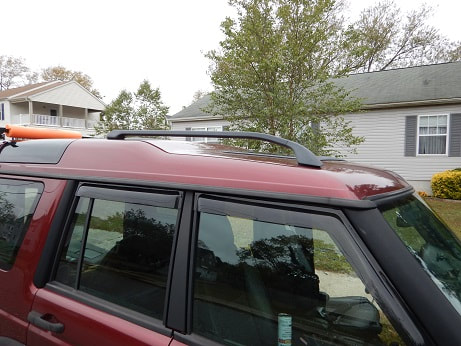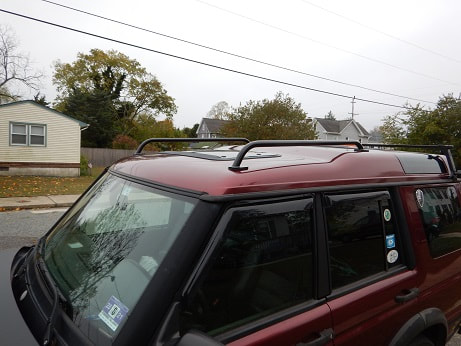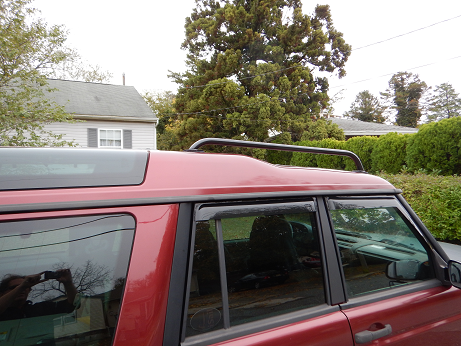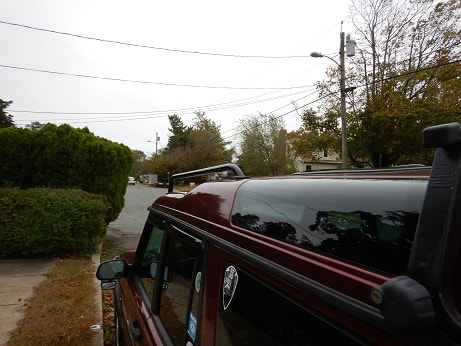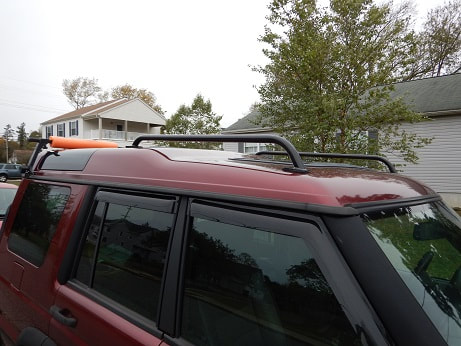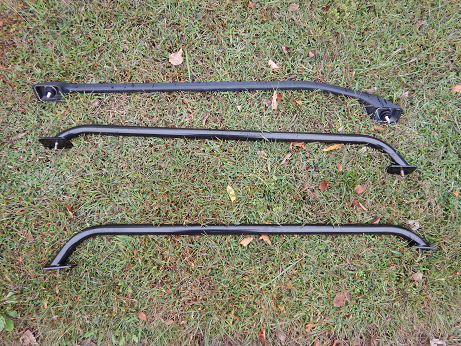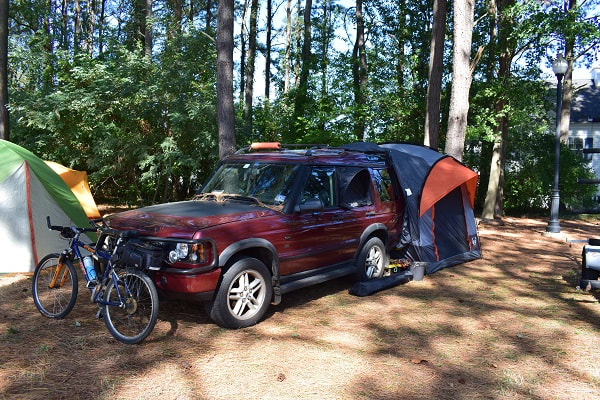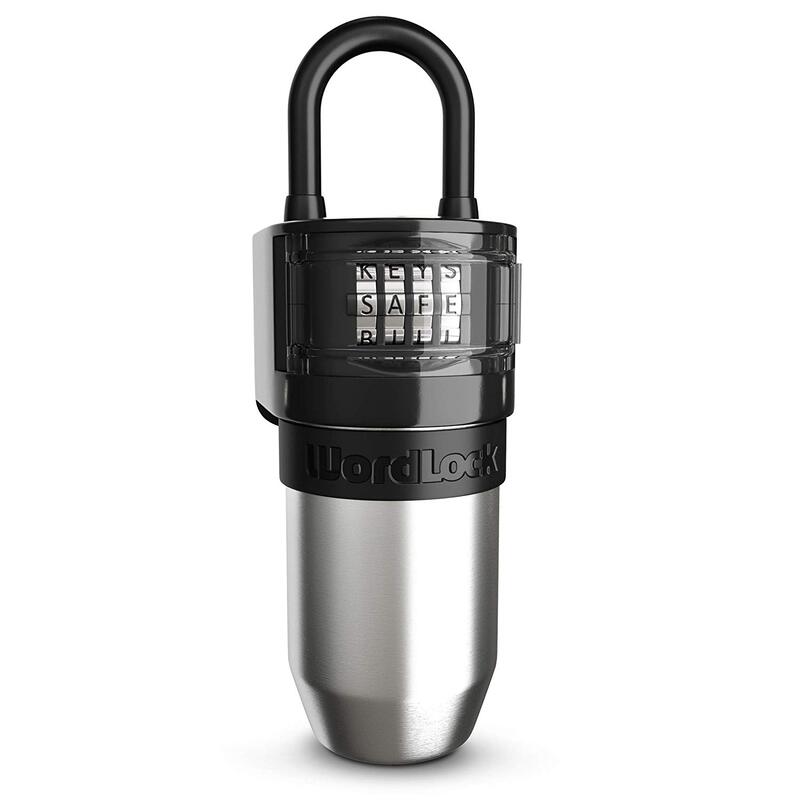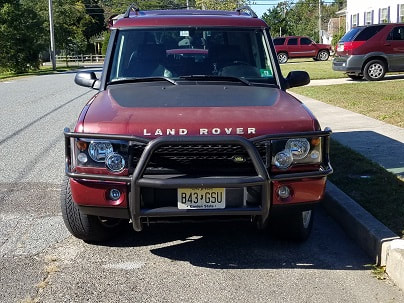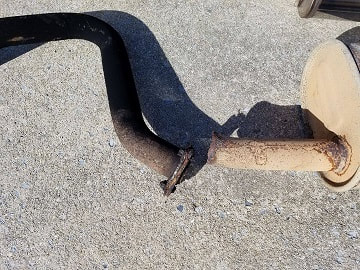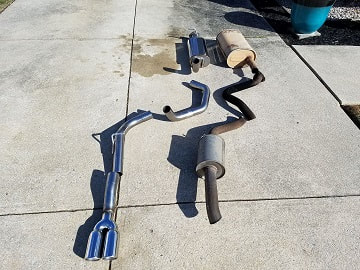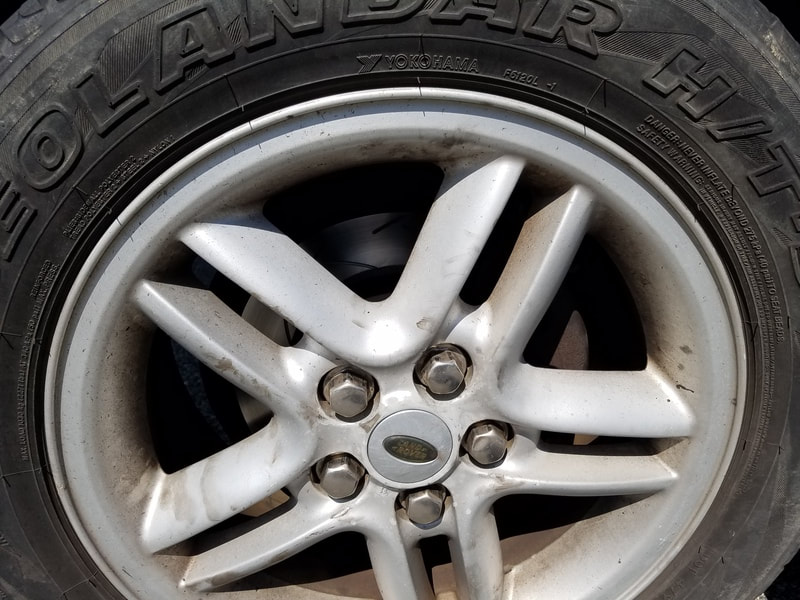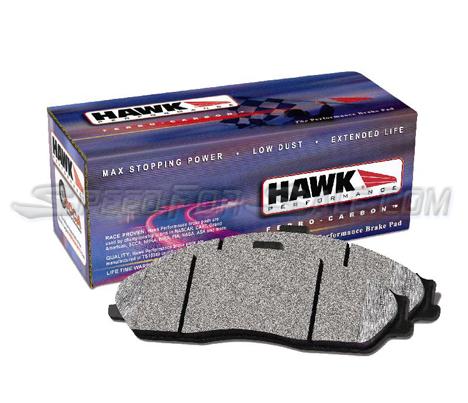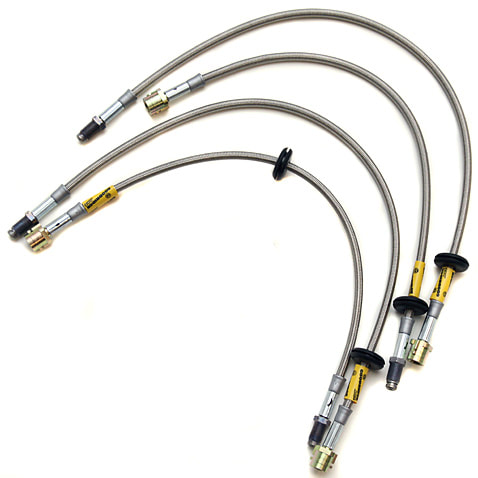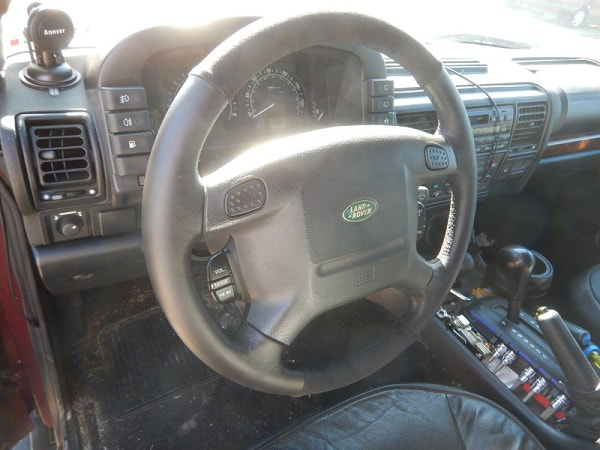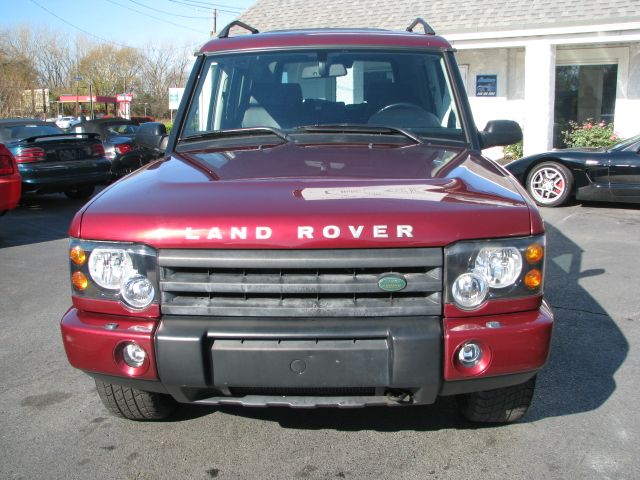|
Sometime ago I mentioned in a post about removing the stock reversing lights on my Disco and replacing them with individual LED lights. While they did work well, I was never 100% happy with the outcome due to the huge holes left in the steel expedition bumper where the reversing and fog lights were. Trolling ebay UK I found a nice set of "lower light guards" for the rear fog/reversing lights and ordered them. A little bulkier than most, they hide the holes in the bumper well. They also give the lights a lot of protection from errant parkers and backing up into my trailers. With them ordered and the holes drilled to mount them, it was time to move in. Out came the 2.5" 800 lumen lights, the 7-way trailer receptacle, and the rear fog. In went slightly small 2 inch 900 Lumin lights. 1@ 130 degrees, 2@ 65 degrees and 2@ 30 degrees for a nice wide spread across the back. I also added to smaller flush mount lights to the sides of the bumper. Nobody will ever have an excuse to hit me in the rear again when I am in reverse. All told 6300 lumens of light! Yes, the bumper needs some touching up and my truck needs a bath. I should also put the filler piece back in on the corner above the bumper. Someday...
0 Comments
I know the truck does not get the love it should. It moves me day in and day out to work, tows my boats all over the area, takes me places to go hiking and biking. It's a reliable steed that just keeps going. It got some love. With 111,700ish miles "on the clock" it was time to do something about the suspension. The shocks were beyond blown and useless and the springs had seriously sagged. I didn't realize how bad it had gotten until I towed my new boat down from Long Island and the undulations going down the parkway could have provoked seasickness as the weight of the boat and trailer set up quite the harmonic between the two. I knew this day was coming, and didn't want to go with new stock springs or the usual aftermarket springs as those are all for lifting your truck for serious off roading. I didn't need that. A company in England, Bearmach, sold stock height heavy duty rear springs, but only recently started selling the same for the front. I jumped on them and a set of Bilstein heavyduty shocks and new swaybar links. Everyone tells me those break off rather than unbolting, so it seemed prudent. Being on furlough from work due to the pandemic seemed the perfect time to get the work done, ordinarily all my boats and vehicles would be competing for my limited time off, now that I am sitting at home working on projects, it was perfect timing! The rear came first. Off came the old shocks, springs, and swaybar links. The latter being a serious PITA to remove. They and the shocks were completely blown and useless. I am not certain what tools you are supposed to use to remove the swaybar links, but it was not anything I owned. Definitely a Rube Goldberg contraption that I eventually got loose and off. After that, it was just a matter of compressing the spring and removing it, followed by a bit of "installation is the reverse of removal" for them and the shocks. Things were looking clean and pretty! As you can see though, the old springs had definitely seen much better days. As had the shocks. I am not sure the would have dampened the suspension on a playmobile car. That was yesterday, today was the fronts. The suspension on a Landrover is seriously overbuilt, it is the only part of the truck to never break. Even the lug nuts have some heft to them. Unlike the rear, the front has the shocks inside the springs. To remove them you have to pull this odd open topped cone like housing that holds the top of the shock. Once you do that and remove the two bolts at the bottom, the entire shock assembly slides out the top through the engine compartment. After that, it is just a matter of compressing the springs and reversing everything to get it back together. Look ma! No suspension! All back together, looking neat and tidy, at least until I have to drive through some nasty weather. Unlike the rear, one of the front swaybar links did not want to respond to any type of persuasion. I tried talking nice, I tried pleading, I even tried begging and bribery. I finally had to resort to violence. Now that she is all done, a few tidbits I have noticed. I feel every little bump going down the road, I anticipated that with the heavy duty springs and the Performance shocks. I did not expect that the bigger bumps would feel better. I can only assume I was hitting the bump stops all the time. This also cured the rattle I had in the rear. Every time I hit a big enough bump, the exhaust would bang against something. Now that the suspension does not compress all the way just going down the road, the noise is gone.
She also sits a LOT higher. The stock springs on the Discovery 2 all sag pretty badly with time. It's how Land Rover was able to give the truck a more luxurious ride, but at a cost to longevity. Eventually the new springs will settle in a few thousand miles, lowering the truck a touch. I certainly hope so, or I am going to need bigger tyres to fill that fenderwell gap.
Between 1995 and 2003 Land Rover equipped all the Discoverys, both Series 1 and 2 with some rather flimsy aluminium rails that bolted through the roof for use in holding things in place. Too much weight or a heavy bump while holding weight, and the rails would bend and possibly kink the roof.
Mine also leaked on the passenger side. Rocky-Road outfitters out in Colorado makes some truly beefy all tubular steel that bolt right into the stock mounting points. They certainly look the part. While I have no intentions on putting one of those monstrous overlanding racks atop my Disco, I do carry kayaks, masts, rowboats, and the like. Being able to safely put them on the roof without worry was worth the price of admission
https://www.rocky-road.com/index2.html
By definition, a 4x4 vehicle should be able to go almost anywhere, preferably with some comfort and an ability to act as a "camp" once you get there. Well, with this latest expedition the furthest my Disco went "into the wild" was across some grass and pine needles, but it was still functioning as a camp while I spent 4 days in St. Michaels Maryland for the Mid-Atlantic Small Boat Festival where I had my GP-14 in the water. (that's a different story)
Shown here, I have the "SUV Tent" hooked to the back and a pair of window screens/rain shields on the back two doors. I slept in the back after removing the seats and used the tent for sitting, reading, changing, and storing equipment for my time there. All new cars use keys with computer chips in them. These might act as a theft deterrent (like on my disco) or, in more advanced vehicles, store all of a driver's "presets" so that every time the key is turned on, the seats, mirrors, climate control, and even the radio are tuned to perfection. Some cars do not even use real keys anymore, just a fob you can leave in your pocket. One thing they all have in common is protecting them from moisture. As a sailor, rower, and kayaker, I am always around water. There is no way I want my keys around it too. Leaving in my pocket or even in a sealed container aboard the boat is flirting with disaster. I found something better. A key safe. While it is marketed towards realtors, they also say it is great for surfers, going to the beach, and for use out of doors. I agree. It's also big enough to house my rather Land Rover's rather bulky key. No, I am not going to tell you where I am hiding it, but it will be out of sight and mostly accessible at the same time. It only needs to hold one key, but can do more. I may need to get a duplicate made and leave it in there.
One of the rarely seen options for the Discovery 2 is the factory Land Rover Brush Guard. Just as the Disco2 went into production, the rules in Europe changed in regards to pedestrian safety. The first year got the tubular metal guard and the later years got a rubberized model that did the Rover no favours in the looks department. So not many were installed and even fewer have survived the 17 to 14 years. I had this one sitting in the basement, collecting dust. With all my boat projects temporarily wrapped up, it was time to clean it, paint it, and install it. It really changes the whole look of the Truck. I still need to clean up the headlight guards and then decide what lights I want to run in the opening.
Maybe I exaggerate a bit. I bet you were imagining my disco with huge LED bars on the bumper and on the roof and maybe a couple of LED spots by the mirrors like so many mall crawling Jeeps have? Well, to be fair, I did use LEDs. After being rear ended while reversing some time ago, I hatched a plan to replace the rear bumper lights with LEDs. Not just LED lamps in the stock housings, but entirely new housings. A trip to www.superbrightleds.com/ netted me 2 pair each of White LED lights, one each in a narrow beam and the other in wide. The fifth light was a red LED to replace the rear fog light that all European cars have. I find that light rather important, used in Europe and the rest of the world when the weather gets truly nasty, I use it when it is heavily snowing or really sheeting down. I have yet to see fog thick enough to warrant it's use. Balancing the rear fog light off is a seven pin trailer plug. As the trailers for my boats will have more than just a combo set of stop, tail, and turn signals, moving over to the European Seven pin system allows for separate turn signals, reversing lights, and even another rear fog. After all the work I am putting into my boats, I do not need somebody running into the back of one of them in bad weather. Metal Fatigues, rusts, and falls apart with time. Even "stainless steel" eventually succumbs to oxidation. The exhaust on any vehicle gets exposed to the worst of the lot. Vibration, expansion and contraction from heat, exposure to the elements, and exposure to debris on the road. Eventually the system on my Rover failed, breaking a weld just after the muffler (thankfully, so it did not get any louder) and needed to be replaced.
Land Rovers are not known for the great economy, with full time four wheel drive, the aerodynamics of a small garden shed, heavy weight, and a largish V8 engine, they simply cannot compete with a Prius in terms of economical use. Combine all that with it's need for premium fuel, and you can see why I want to do what I can to increase how many miles I can go in a gallon. I also had a bad catalyst and she needed new Oxygen Sensors. Before everything was replaced, I was getting a dismal 9 miles to the gallon and leaving a cloud of unburnt hydrocarbons in the form of a cloud of soot from every stop. Replacing everything from the Manifolds back with a Stainless Steel Magnaflow system did wonders. Now She is up to almost 16mpg with a slightly throatier sound. As the Disco is used an expeditionary vehicle, a tow pig, and as my daily driver, being safe on the road and off is often a case of being able to stop quickly, controllably, and often. The stock brakes on the LandRover are a decent size, but at almost 100,000 miles, getting old and worn out. Replacement was a no brainer, only the best. 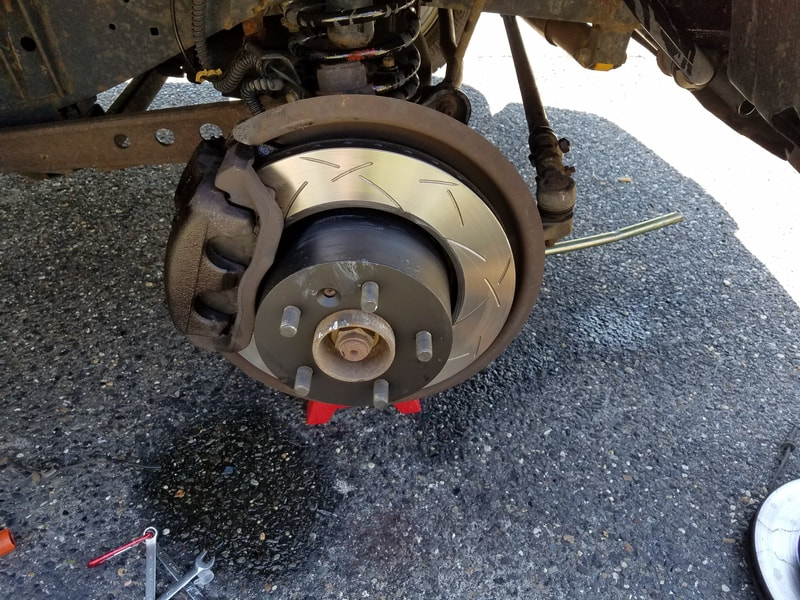 Rotors take all the heat in stopping. That is one of their primary jobs, to be a heat sink so that the pads do not get too hot to do their job. Yes, the pads do squeeze them, so they are also a friction surface, but nothing like the pads. Slotted Rotors dissipate heat better and keep the pads clear of built up brake dust and heated gases The Pads are the part that squeeze against the rotor and cause all that heat. They are a high friction medium that must work in rain, sleet, snow, underwater, and even in the dry. The higher the friction, the faster you stop, the faster they wear away, and the faster the rotor is reduced so worn out scrap. It's a real balancing act. Not easily seen, the flexible lines that transport the brake fluid to the brakes have a terrible life. Not only do they have to survive with a caustic liquid inside (never drip some brake fluid on paint) but they have to deal with the movement of the suspension and all the dirt from being beneath the truck. You should replace these every 2 years due to internal rot. The braided lines swell less, expand less under pressure, and put up with flying debris better than the stock rubber lines. 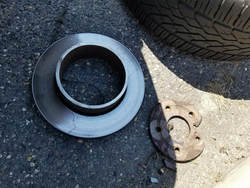 And of course nothing goes according to plan. One rotor was completely rusted to the hub. No amount of heat, banging, or pressure would remove it. I quite literally had to cut it free with an angle grinder. That's an hour of my life I will never get back. Not all upgrades are purely functional. The Original wheel on my Disco worked perfectly fine and was not in all that bad a shape. The leather had seen better days, and the top of the rim saw the padding break free of the internal structure so you could "roll" it with your hands, but it still looked decent enough and worked fine.
The new cover was made by a firm in Poland. It is black leather with black Alcantara on the top and bottom for looks and feel. This suede like material is sun fade free and is nice to grab on a cold winter day as it does not instantly freeze your fingers like the smoother leather does. I also used this time to replace the clock spring mechanism, which brought my horn, radio controls, and cruise control back to life. |
I brought home my Disco over 4 years ago when I bought my SeaSprite 23. I needed a vehicle that was not a pickup for both towing and daily driving duties. The fact that I did not want an American SUV led me to either a BMW X5 or a Land Rover. I could not afford the 5er, so this lovely red Disco it was.
|
